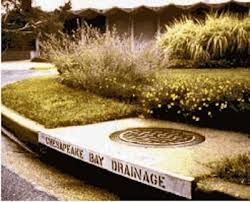Growth
GERALD WINEGRAD: LARRY HOGAN’S SELF-DEALING AND ANTI-ENVIRONMENTAL REGIME | COMMENTARY
Hogan still portrays himself as a small business owner. But HOGAN enterprises reported more than $2.5 billion in real estate deals since 1985. His enterprises are still touting their ability to grease the skids for government approvals and entitlements. HOGAN’s website claims: “If you want to determine the best strategy for taking your property through the governmental entitlement process as well as achieve the best development potential and highest return on your investment, you only need to turn to HOGAN.”
Read MoreEfforts to restore the Chesapeake Bay are a study in cowardice and political expediency
There is more very bad news for all of us in Chesapeake Country: the bay watershed lost 20,000 acres of forest a year (2013-2018). Maryland led the way. A new study also shows that developed impervious areas in the watershed increased by 50,651 acres from 2013 to 2018. This is mostly from new structures, roads, driveways, parking lots and runways.
Read MoreLand Use Threatens Chesapeake Bay and Quality of Life
After 50 years of environmental advocacy, I can state unequivocally that the most abused power in the U.S. is the authority over land use given local authorities. Through the centuries, too many local officials have been blinded by greed including campaign contributions, and in rarer cases, bribes, as well as by seeking development at any cost as a goal.
Read MoreThe 2012 Draft Comprehensive Plan for Charles County: What You Get When the Developers Write Your Plan
…some counties have revolted against the State’s threat to their autonomy and decided to test the State’s resolve to use the “stick.” Charles County seems poised to join the ranks of Frederick, Cecil and others who don’t have a problem with new development costs being born by the taxpayers and the water being too dirty for their children to play in.
Read More‘We Must Preserve an Economic Asset’
(This ninth installment in our series, What’s It Going to Take?, looks at how the environmental community can regain the initiative and build the political will necessary to clean up the Chesapeake Bay.)
In this exclusive interview with the Bay Action Plan, Chesapeake Bay Program Director Nick DiPasquale says that the costs of cleaning the Chesapeake Bay are significant, but manageable.
“No time is a good time when you’re talking about trying to implement very costly pollution control measures,” DiPasquale said. “But when you spread that cost over the life of a project… you find that the cost to individual households is a few dollars a month. Compare it to cellphone or cable costs, it puts things into perspective.”
Read MoreSprawl Poisons the Bay
(Posted by Gerald Winegrad).
The recent deluges leading to massive stormwater runoff into the Chesapeake Bay may cause great damage to an already seriously impaired system. We previously have discussed in this spot the huge flows of Bay-choking nutrients and sediment from farms each time it rains. Now, we will devote discussions to the pollution flowing from developed lands including huge amounts of nutrients, sediment, and toxic chemicals.
The Chesapeake’s watershed before 1607 was 95 percent forested with huge acreage of intact wetlands. These forests and wetlands absorbed and held nutrients and sediment. The flow of these Bay-killing pollutants was greatly accelerated due to enormous changes in land use when we converted forests and wetlands to agriculture and then, more recently, to development. The Bay region has since lost about 50 percent of its forest cover and 72 percent of its wetlands. No change has been more devastating for the Bay.
Read More